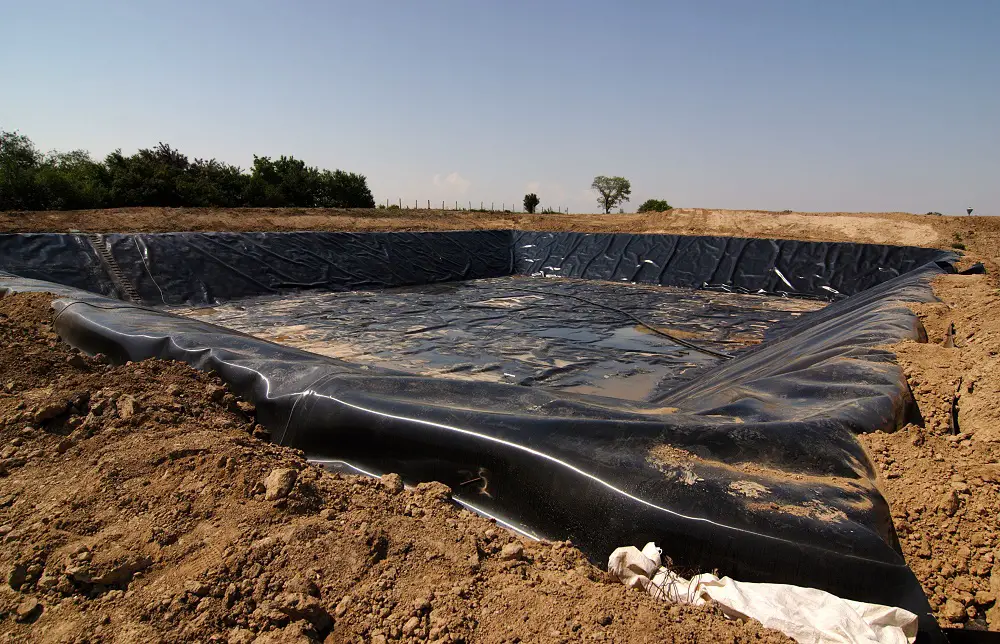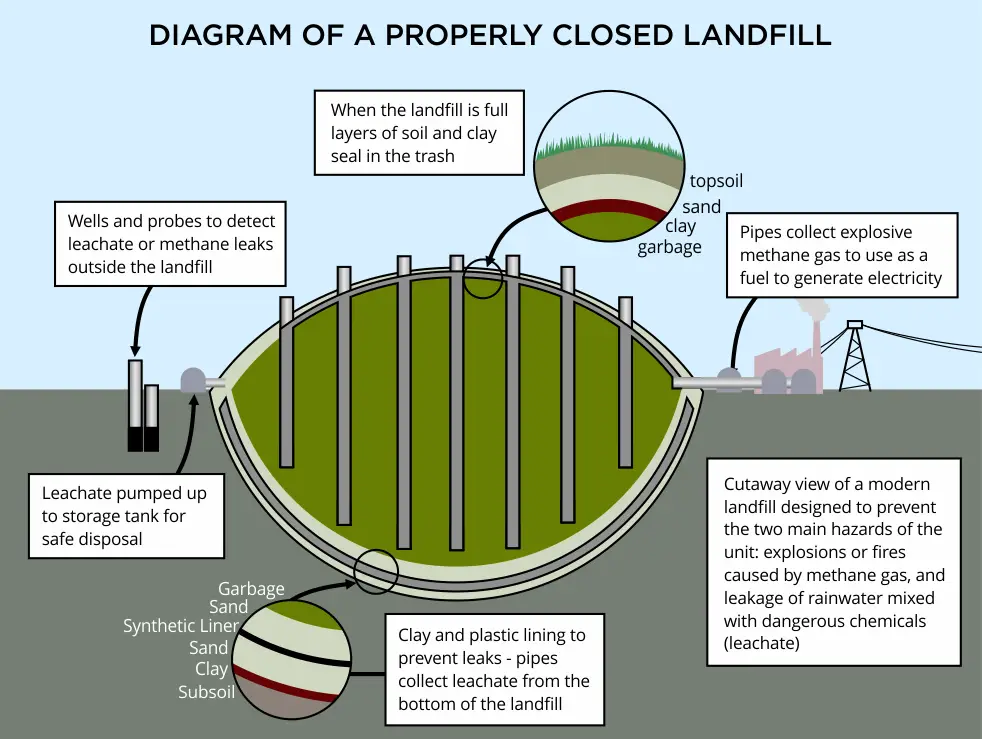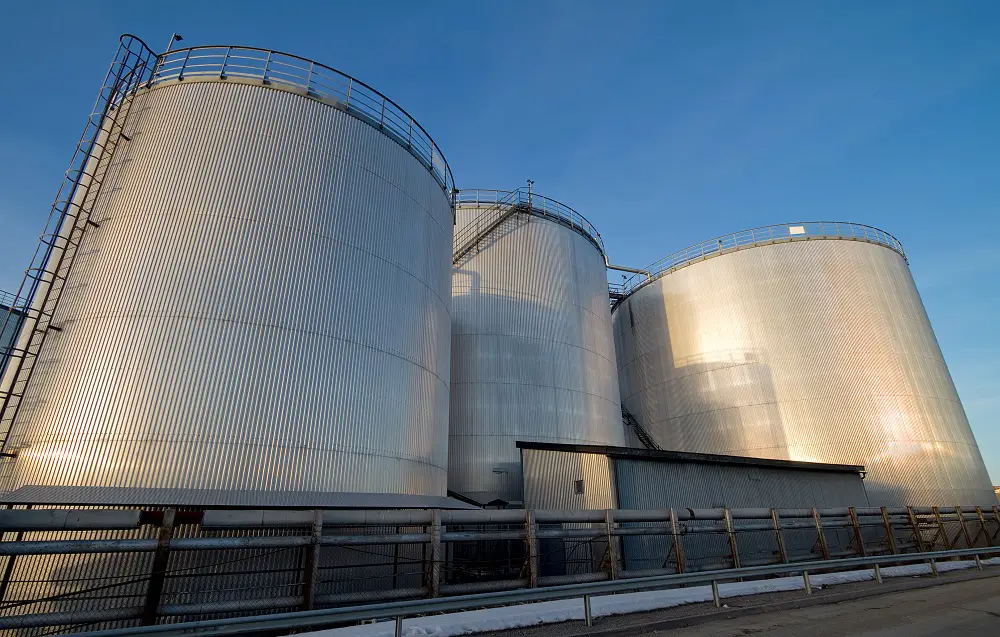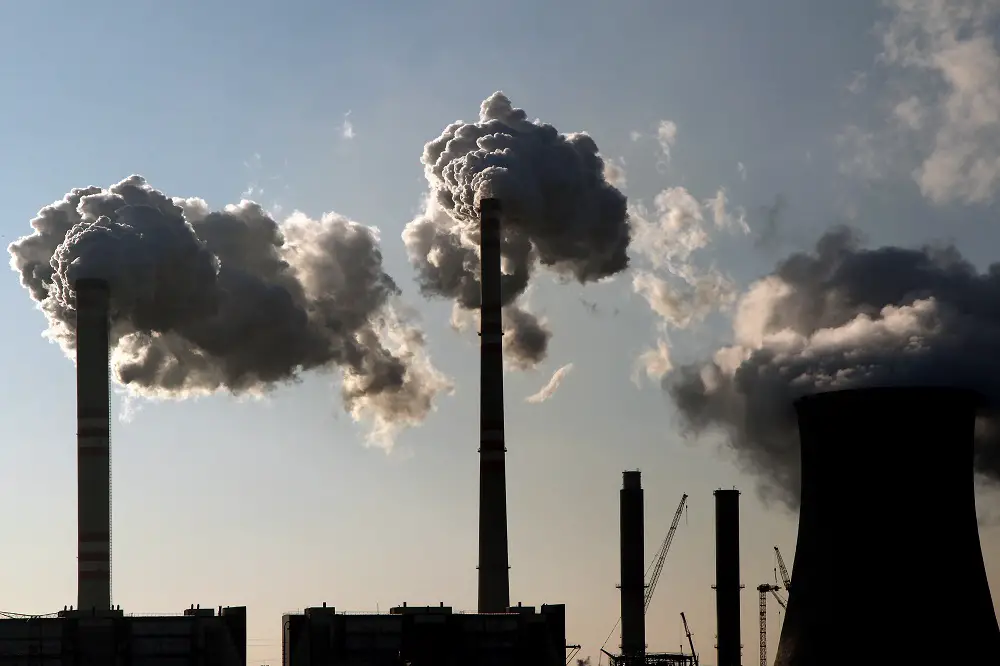Also known as dumps, tips, or municipal solid waste sites, landfills are one of the most common techniques for disposing of large quantities of garbage.
As of September 2024, the United States has designated 2,600 sites for the disposal of household and some commercial and industrial trash. The U.S. Environmental Protection Agency (EPA) does not allow hazardous material to be disposed of in landfills.
The EPA regulates every part of the landfill process, from site selection to construction to monitoring to cleanup. These regulations were designed to keep people, groundwater supplies, and the environment safe from all of the garbage we produce.
Anatomy of a Landfill
The first generation of landfills were simply piles of trash that were collected on the surface in undesirable spaces and ignored; out of sight, out of mind. These landfills produced noxious odors and respiratory problems in surrounding neighborhoods and often leaked pollutants into the water supply.
Modern landfills, defined as any landfill built after the 1976 passage of the Resource Conservation and Recovery Act, are designed and operated with more care and maintenance in mind. Instead of leaving trash on the surface, modern landfills begin as a giant hole in the ground.
In order to meet EPA regulations, the hole must be lined with two feet of compacted, impermeable clay on the bottom and each of the sides. The clay is then followed by a flexible “geomembrane” liner, often made of plastic, that can prevent any future toxic or decomposing trash from contaminating nearby sources of groundwater.

Two sets of pipes may be added at this point, but we’ll discuss those in a minute. As trash gets added to the landfill, it is compacted down and then topped by several inches of soil. More trash will be dumped on top, followed by more soil, more trash, and more soil until the original hole is filled and cannot handle any more.
Eventually, the owners of the landfill most install a final cover of 18 inches of earthen material, such as soil, sand, silt, or woodchips, and then a 6-inch erosion layer. The erosion layer is another barrier between the trash of the landfill and the outside world, but it’s ok if this layer gets partially washed away by wind or rain so long as the underlying earthen material is kept intact and keeps the trash locked underground.
Finally, the erosion layer is capped by native vegetation that will reduce the erosion rate and keep the sealing layers intact. Ideally, a closed landfill should resemble a very tall, green hill.

The above image is a cut-away view of what a closed landfill looks like. Notice all the pipes in the diagram? One system of pipes addresses the leachate problem and the second system handles the methane.
Leachate is the sludge-like fluid created in landfills when rain or snow filters down through the layers of soil to mix with contaminates in the landfill. Leachate is extremely hazardous and should not be consumed or interacted with without protective equipment.
Under ideal circumstances, the leachate will trickle down through the layers until it is caught by a leachate collection pipe that leads to a leachate pond. Leachate ponds may connect directly to public sewer systems where they can be decontaminated or the leachate may be pumped into a truck and hauled to a treatment facility for cleaning.
Landfills also produce methane as an unintended by-product. When food and other organic materials are thrown away in the trash and left to decompose in a landfill, they will produce colorless, odorless, flammable methane. A second set of pipes will collect the methane underground, before it has a chance to escape into the atmosphere. Some landfills will immediately burn the methane before it has a chance to cause any harm. Other landfills, however, have electricity generation stations which can put methane to work as a source of energy.
The Benefits of Landfills
The idea of taking waste out of cities and burying it underground is close to 5,000 years old. Archeological evidence on the island of Crete (in modern-day Greece) suggests that cities have been designating trash sites and burying their unwanted waste since 3,000 BCE. However, human populations have grown exponentially since then, as has the amount of trash we produce.
In 2018, the U.S. produced 292.4 million tons of municipal solid waste or 4.9 pounds of trash per person per day. Prior the establishment of a municipal waste system in the late nineteenth century, people in cities left their trash in the gutters in the street. New York City was famous for having piles of dead animals, furniture, horse urine, and “street gunk” that came up to your knees.
The modern landfill system is a simple and straightforward approach for separating trash from the people who made it. By designating a specific location for trash, it reduces “dumping,” which is when trash is left in random locations without regard for the environmental consequences for that location. Landfills are also currently the best option for how to handle any waste that can’t be recycled, composted, or otherwise given new purpose.
Finally, landfills as part of the modern sanitation system also employs an entire industry of laborers, managers, city planners, and public health officials. While no data is available on how many people work in the entire industry, the largest waste removal company, Waste Management, Inc. employs more than 48,000 people and generates $17.39 billion in revenue. Unfortunately, the system still has a few bugs to work out.
The Risks of Landfills
Starting at the beginning of a landfill’s life span, one of the issues associated with landfills is their location. Landfills are filled with the trash that no one wants, which means that decision-makers want landfills to be sited far, far away from their homes and offices. Historically, those decision-makers were White. As a result, between 1966 and1995, landfills were disproportionately approved in locations near poor neighborhoods and communities of color. Not only did these communities have to deal with any odors or sounds coming from the landfill, poorly constructed landfills also posed a health risk.
As mentioned earlier, one of the first steps of building a landfill is installing a geomembrane layer in between the land and the trash. However, the geomembrane layer is not indestructible. Broken appliances, toys, or any of a thousand other items that can get thrown away could potentially rip the lining.
If the lining does rip, leachate formed from rain and discarded batteries could potentially burn a hole in plastic. Once free of the geomembrane, it becomes possible that the leachate can migrate underground until it reaches the water supply. Once there, leachate can cause bleeding stomach disorders, cancer, cognitive impairments in children, and birth defects.
Additionally, the methane that landfills produce is a greenhouse gas that exacerbates climate change. In 2020, 15% of all methane emissions came from landfills that failed to completely burn or capture all of their methane. In short, the consequences of climate change will reshape every aspect of life on Earth.
Landfills are an ancient answer to an ancient problem: what do we do with our trash? Some parts of the system work, but others are in dire need of an upgrade and alternative solutions. For example, composting can reduce the amount of organic material that gets into a landfill, thereby reducing methane production.
Recycling will keep certain materials such as paper or metal out of landfills entirely while up-cycling creates new purposes for old trash. Landfills are part of an evolving waste management system that will change over time in order to meet the world’s changing needs.




